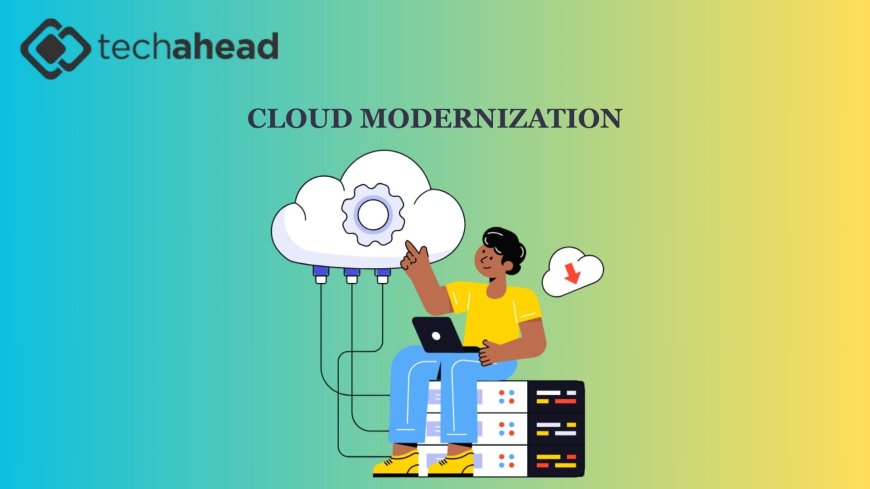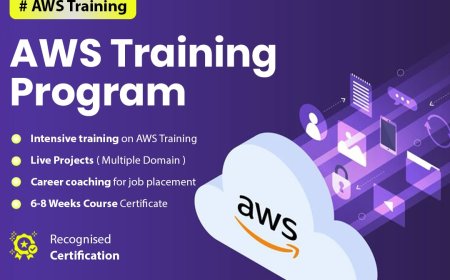Cost Optimization in the Cloud Era: How Cloud Modernization and Managed Cloud Services Deliver ROI

The promise of the cloudagility, scalability, and innovationhas transformed the way organizations operate. But as cloud adoption matures in 2025, a new challenge has emerged: managing and optimizing costs. Without a clear strategy, cloud spending can quickly spiral out of control, undermining the very benefits that made the cloud so attractive in the first place. Cloud modernization has become the essential lever for organizations seeking to maximize value while minimizing spend. At the heart of this transformation are Managed Cloud Services, which provide the expertise, automation, and continuous optimization needed to ensure every dollar invested in the cloud delivers measurable returns. Lets explore the latest strategies, tools, and real-world examples of cost optimization in the cloud eraand why cloud modernization is essential for sustainable ROI.
The Cost Challenge in Cloud Environments
Cloud pricing models are complex and constantly evolving. Organizations face a dizzying array of optionson-demand, reserved, spot instances, savings plans, and more. Add to this the proliferation of services, regions, and accounts, and its easy to see how costs can become opaque and difficult to control.
Many businesses discover too late that their cloud bills are higher than expected, often due to overprovisioned resources, underutilized services, or lack of visibility into usage patterns. In some cases, cloud costs can even exceed those of traditional on-premises infrastructure if not managed proactively. This is why cost optimization has become a top priority for CIOs, CFOs, and business leaders alike.
The Role of Cloud Modernization in Cost Optimization
Cloud modernization is not just about moving workloads to the cloudits about rearchitecting applications, automating operations, and leveraging cloud-native services to drive efficiency and reduce waste. By modernizing legacy systems, organizations can take full advantage of the clouds elasticity, scalability, and pay-as-you-go pricing.
Managed Cloud Services are the enablers of this shift. They bring together deep technical expertise, advanced automation, and continuous monitoring to help organizations optimize their cloud environments. This partnership ensures that cost savings are not just achieved during migration, but sustained over time.
Key Cost Optimization Strategies
1. Rightsizing and Auto-Scaling
Modernized cloud environments enable dynamic resource allocation. Cloud modernization allows organizations to match resources to actual demand, eliminating waste and reducing costs. Managed Cloud Services use advanced analytics to monitor usage patterns, identify underutilized resources, and implement auto-scaling policies that adjust capacity in real time.
For example, a global retailer modernized its e-commerce platform and partnered with a Managed Cloud Services provider for ongoing optimization. By rightsizing resources and automating scaling, the company reduced cloud spend by 30% while improving performance and customer experience.
2. Automation and Tagging
Automation is essential for effective cost management. Managed Cloud Services implement automated policies for provisioning, scaling, and decommissioning resources. This ensures that resources are only running when needed and are automatically shut down or scaled back during periods of low demand.
Tagging is equally important, enabling granular tracking of costs by project, department, or environment. With a robust tagging strategy, organizations can generate detailed cost allocation reports, making it easier to identify and address cost drivers.
3. Multi-Cloud and Hybrid Optimization
Many organizations are adopting multi-cloud and hybrid strategies to avoid vendor lock-in, improve resilience, and optimize costs. Cloud modernization and Managed Cloud Services help evaluate workloads across different platformspublic cloud, private cloud, and on-premises environmentsto determine the most cost-effective placement.
This often involves building cloud-agnostic architectures, leveraging containerization and orchestration tools like Kubernetes, and implementing unified monitoring and management solutions. The result is greater flexibility, improved performance, and optimized costs across the entire IT landscape.
4. FinOps Culture
Cost optimization is as much about culture as it is about technology. Managed Cloud Services help organizations build a FinOps (Financial Operations) culture, where finance, IT, and business teams collaborate to manage cloud spend proactively.
This involves establishing clear ownership of cloud costs, setting budgets and forecasts, and implementing regular cost reviews. FinOps workshops, training, and best practices ensure that everyone in the organization understands their role in controlling cloud costs and maximizing value.
5. Leveraging Spot and Savings Plans
Cloud providers offer significant discounts for organizations willing to commit to certain usage patterns or accept some flexibility in resource availability. Managed Cloud Services help clients take advantage of savings plans, reserved instances, and spot instances to reduce costs for predictable and flexible workloads.
For example, a SaaS provider partnered with a Managed Cloud Services team to analyze its usage patterns and implement a mix of savings plans and spot instances. This strategy resulted in a 40% reduction in compute costs while maintaining high availability and performance.
Real-World Example: Media Company Achieves Sustainable Savings
A leading media company faced escalating cloud costs as it expanded its digital offerings. By engaging in a comprehensive cloud modernization initiative and leveraging Managed Cloud Services, the company conducted a detailed cost optimization assessment. The team identified underutilized resources, implemented automated scaling policies, and introduced a robust tagging strategy for better cost allocation.
The results were immediate and substantial: a 25% reduction in overall cloud spend, improved resource utilization, and greater visibility into cost drivers. The company was able to reinvest the savings into new content initiatives, driving further growth and innovation.
Choosing the Right Managed Cloud Services Partner
Selecting the right Managed Cloud Services provider is a strategic decision that can have a lasting impact on your organizations bottom line. Look for partners with:
- A proven track record in cost optimization and cloud management
- Deep expertise in your industry and technology stack
- Advanced automation and analytics capabilities
- Transparent performance metrics and service level agreements
- A collaborative, proactive approach to continuous improvement
The best partners will continuously monitor, analyze, and optimize your cloud environment to ensure ongoing savings and maximum value.
The Future of Cost Optimization in the Cloud
As cloud adoption continues to grow, cost optimization will remain a critical focus for organizations of all sizes. Expect to see increased use of AI and machine learning for predictive cost management, more sophisticated automation tools, and greater integration of financial and operational data.
Cloud modernization and Managed Cloud Services will continue to evolve, offering even greater intelligence, automation, and integration across hybrid and multi-cloud environments. The organizations that embrace these strategies will be best positioned to achieve sustainable ROI and maintain a competitive edge.
Conclusion
Cloud modernization and Managed Cloud Services are the foundation of cost optimization in the cloud era. With the right strategy and partner, organizations can achieve the agility and scalability they needwithout breaking the bank. In 2025, cost optimization is not just a benefitits a competitive advantage and a critical enabler of digital transformation. The future belongs to those who modernize with purpose, manage with precision, and invest in continuous improvement.































